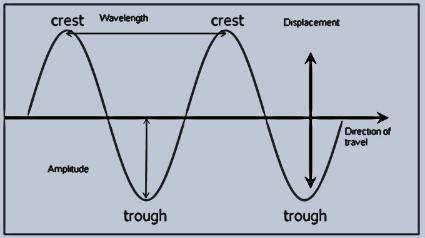
Physics, 26.08.2019 00:30 goalltheway4768
The direction of motion for a series of wave fronts is represented with a(n) wavelength ray crest trough

Answers: 2


Other questions on the subject: Physics

Physics, 21.06.2019 22:00, Angelo1660
Air is held within a frictionless piston-cylinder container, which is oriented vertically. the mass of the piston is 0.45 kg and the cross-sectional area is 0.0030 m2. initially (state 1) the pressure of the gas is sufficient to support the weight of the piston as well as the force exerted by the atmospheric pressure ( 101.32 kpa). the volume occupied by the air within the cylinder in state 1 is 1.00 liter. one end of a spring (with spring constant k = 1000 n/m) is attached to the top of the piston, while the other end of the spring is attached to a stage that can move vertically. initially the spring is undeflected and therefore exerts no force. then the stage is then moved quasistatically downward a distance of 10.0 cm, at which point the system reaches state 2. the piston-cylinder is not insulated; rather it remains in diathermal contact with the surroundings, which are at a constant temperature of 300 k. what is the change of pressure within the container?
Answers: 3

Physics, 21.06.2019 22:40, cookies1164
Ablock of mass m = 2.5 kg is attached to a spring with spring constant k = 710 n/m. it is initially at rest on an inclined plane that is at an angle of θ = 23° with respect to the horizontal, and the coefficient of kinetic friction between the block and the plane is μk = 0.19. in the initial position, where the spring is compressed by a distance of d = 0.16 m, the mass is at its lowest position and the spring is compressed the maximum amount. take the initial gravitational energy of the block as zero. a) what is the block's initial mechanical energy? b) if the spring pushes the block up the incline, what distance, l, in meters will the block travel before coming to rest? the spring remains attached to both the block and the fixed wall throughout its motion.
Answers: 3

Physics, 22.06.2019 02:10, kernlife
Astudent is performing an experiment comparing sound and light waves. the student gathers the following data. what conclusion does the student most likely make based on this data? light waves always travel the same speed; however, the speed of sound is determined by the medium that it travels through. all sound waves always have the same energy, so the temperature of the medium does not affect wave speed. light needs to vibrate particles, so it travels fastest in tightly packed solids, while sound does not need a medium, so it travels fastest in a gas. tightly packed particles in solids slow down the light waves; however, sound waves make particles bounce into each other, so they travel faster in solids.
Answers: 3

Physics, 22.06.2019 10:30, markfaerman5408
Carbon is allowed to diffuse through a steel plate 15 mm thick. the concentrations of carbon at the two faces are 0.65 and 0.30 kg c/m^3 fe, which are maintained constant. if the preexponential and activation energy are 6.2 x 10-7 m2 /s and 80,000 j/mol, respectively, compute the temperature at which the diffusion flux is 1.43 x 10^-9 kg/m^2 -s.
Answers: 3
You know the right answer?
The direction of motion for a series of wave fronts is represented with a(n) wavelength ray crest t...
Questions in other subjects:

Mathematics, 21.05.2021 17:50

Mathematics, 21.05.2021 17:50


History, 21.05.2021 17:50

Mathematics, 21.05.2021 17:50

Mathematics, 21.05.2021 17:50

Mathematics, 21.05.2021 17:50


Law, 21.05.2021 17:50





